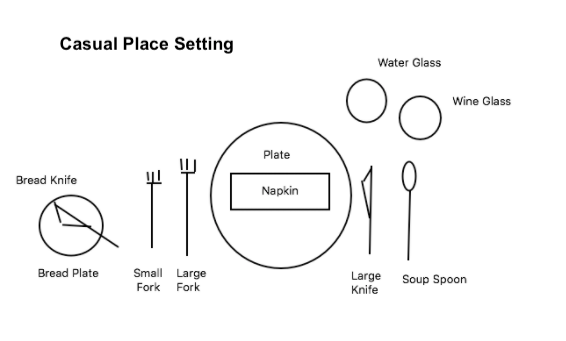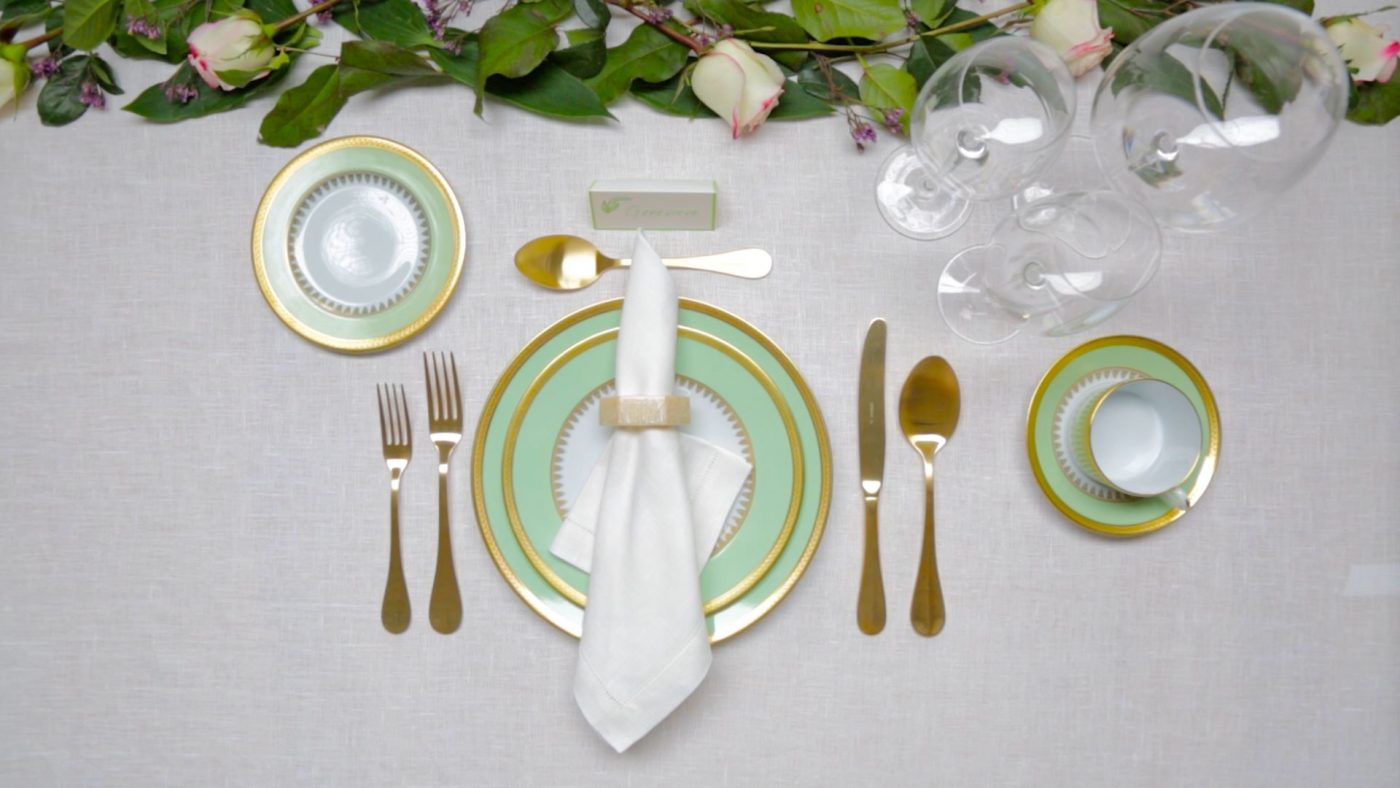A casual lunch or dinner table setting can still be elegant and inviting! Share on XWhether for lunch or dinner, a casual meal requires a less complex table setting than a formal table setting. This is the table setting you are most likely to see in a private home or high street restaurant.
Do you know how to set a casual dinner table? Looking for the right setting for a dinner party? This could be the table setting you are looking for.
Here we will cover the basics and give you some top tips on how to create the perfect casual table setting.
A casual table setting often referred to as an informal table setting, can be considered the most widely used setting. As the table setting you are most regularly going to meet or use, understanding how to approach it is key.
A casual table setting can have many variations and as the name suggests is less formal in structure. As the structure is more fluid, the principal of the home or manager of a high street restaurant may have their own preferred variation and this should always be followed.
The informal or casual setting uses fewer pieces of tableware and cutlery than a formal setting. Serving dishes will typically appear on the table. As with all table settings the food being eaten, the menu, will dictate to some extent the cutlery set on the table.
The cutlery should be arranged so that the set needed for the first course is on the outside. The cutlery required for the second course sits with the first and closer to the plate. The guest works from the outside in as the meal progresses.

How to set a casual dinner table
- If using a table mat place the table mat on the table. A charger can be used instead but choose a casual feeling charger, a wooden plate or other design which is less formal.
- Place the largest fork used for the main course on the left hand side, closest to the plate.
- The small fork may be placed next to the large fork but furthest from the plate. This is used for the first course or salad course if being served.
- On the right closest to the plate, place the largest knife, this is used for the main course.
- Next to the knife and furthest from the plate is placed the soup spoon when soup is being served.
- Directly above the knife place the water glass.
- To the right of the water glass and a little lower place the wine glass approximately above the soup spoon.
Top tips
Where you choose to place the napkin can change the look and feel of the table considerably, as can the colour and material of the napkin. Where the napkin is placed will vary the feel and look too. You might consider folding the napkin and placing to the left of the plate with the forks laid on top. Placed in the centre of the plate folded or using a napkin ring. Another alternative is to put the napkin in the wine glass.
Speak to your principal or manager to find out what their preferences are. You can then adapt and ensure the setting looks how they want.
Find out the menu before you start setting the table. If you are working in a restaurant your manager might have a preferred basic setting. Which you then switch out the cutlery to match the guest’s order later.
A dessert spoon and fork can be placed at the top of the setting above the plate. With the fork handle pointing to the left and the spoon handle to the right. Alternatively, the spoon and fork can be brought to the table once the main course has been finished. And should be omitted completely if a desert is not to be served, such as at lunch.
If there is no bread to be eaten with the meal then the bread plate and knife should be omitted.
To find out more about the differences between a casual table setting or informal setting and a formal table setting see here.
Want to learn more and perfect your skills?
If you are looking to understand table settings and table management in more depth, perfecting your skills then why not consider joining Polo & Tweed’s Silver Service training course. You will learn how to read a menu and put together the correct table setting.
Practice laying the table for all the myriad of service styles along side casual or informal service. A great chance to hone those skills whether you are in food & beverage, boutique hotels, private homes, private jets or yachts, service is an important skill to learn.
Polo & Tweed can provide tailor-made training internationally, for a consultation call +44(0)203 858 0233 or contact us here.

